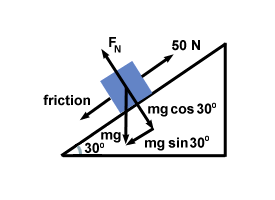Please wait while we process your payment
If you don't see it, please check your spam folder. Sometimes it can end up there.
If you don't see it, please check your spam folder. Sometimes it can end up there.
Please wait while we process your payment

By signing up you agree to our terms and privacy policy.
Don’t have an account? Subscribe now
Create Your Account
Sign up for your FREE 7-day trial
By signing up you agree to our terms and privacy policy.
Already have an account? Log in
Your Email
Choose Your Plan
Individual
Group Discount
Save over 50% with a SparkNotes PLUS Annual Plan!
 payment page
payment page
Purchasing SparkNotes PLUS for a group?
Get Annual Plans at a discount when you buy 2 or more!
Price
$24.99 $18.74 /subscription + tax
Subtotal $37.48 + tax
Save 25% on 2-49 accounts
Save 30% on 50-99 accounts
Want 100 or more? Contact us for a customized plan.
 payment page
payment page
Your Plan
Payment Details
Payment Summary
SparkNotes Plus
You'll be billed after your free trial ends.
7-Day Free Trial
Not Applicable
Renews July 7, 2025 June 30, 2025
Discounts (applied to next billing)
DUE NOW
US $0.00
SNPLUSROCKS20 | 20% Discount
This is not a valid promo code.
Discount Code (one code per order)
SparkNotes PLUS Annual Plan - Group Discount
Qty: 00
SparkNotes Plus subscription is $4.99/month or $24.99/year as selected above. The free trial period is the first 7 days of your subscription. TO CANCEL YOUR SUBSCRIPTION AND AVOID BEING CHARGED, YOU MUST CANCEL BEFORE THE END OF THE FREE TRIAL PERIOD. You may cancel your subscription on your Subscription and Billing page or contact Customer Support at custserv@bn.com. Your subscription will continue automatically once the free trial period is over. Free trial is available to new customers only.
Choose Your Plan
This site is protected by reCAPTCHA and the Google Privacy Policy and Terms of Service apply.
For the next 7 days, you'll have access to awesome PLUS stuff like AP English test prep, No Fear Shakespeare translations and audio, a note-taking tool, personalized dashboard, & much more!
You’ve successfully purchased a group discount. Your group members can use the joining link below to redeem their group membership. You'll also receive an email with the link.
Members will be prompted to log in or create an account to redeem their group membership.
Thanks for creating a SparkNotes account! Continue to start your free trial.
We're sorry, we could not create your account. SparkNotes PLUS is not available in your country. See what countries we’re in.
There was an error creating your account. Please check your payment details and try again.
Please wait while we process your payment

Your PLUS subscription has expired
Please wait while we process your payment
Please wait while we process your payment

Problems 1
Problem :
A 10 kg object experiences a horizontal force which causes it to accelerate at 5 m/s2, moving it a distance of 20 m, horizontally. How much work is done by the force?
The magnitude of the force is given by F = ma = (10)(5) = 50 N. It acts over a distance of 20 m, in the same direction as the displacement of the object, implying that the total work done by the force is given by W = Fx = (50)(20) = 1000 Joules.
Problem :
A ball is connected to a rope and swung around in uniform circular motion. The tension in the rope is measured at 10 N and the radius of the circle is 1 m. How much work is done in one revolution around the circle?
Recall from our study of uniform circular motion that centripetal force is always directed radially, or toward the center of the circle. Also, of course, the displacement at any given time is always tangential, or directed tangent to the circle:
Problem :
A crate is moved across a frictionless floor by a rope THAT is inclined 30 degrees above horizontal. The tension in the rope is 50 N. How much work is done in moving the crate 10 meters?
In this problem a force is exerted which is not parallel to the displacement of the crate. Thus we use the equation W = Fx cosθ. Thus
Problem :
A 10 kg weight is suspended in the air by a strong cable. How much work is done, per unit time, in suspending the weight?
The crate, and thus the point of application of the force, does not move. Thus, though a force is applied, no work is done on the system.
Problem :
A 5 kg block is moved up a 30 degree incline by a force of 50 N, parallel to the incline. The coefficient of kinetic friction between the block and the incline is .25. How much work is done by the 50 N force in moving the block a distance of 10 meters? What is the total work done on the block over the same distance?
Finding the work done by the 50 N force is quite simple. Since it is applied parallel to the incline, the work done is simply W = Fx = (50)(10) = 500 J.
Finding the total work done on the block is more complex. The first step is to
find the net force acting upon the block. To do so we draw a free body diagram:

Please wait while we process your payment

